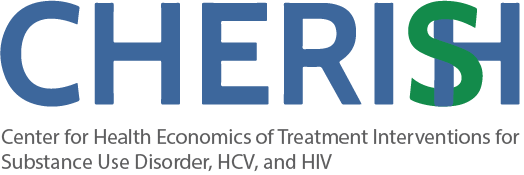
New Rules for Methadone Doses at Home Did Not Increase Overdoses
More Flexible Methadone Take-Home Policy Improved Patient Autonomy
Substance Use Disorder
Blog Post
Produced in conjunction with the Center for Health Economics of Treatment Interventions for Substance Use Disorder, HCV, and HIV
Overdose deaths have increased sharply during the COVID-19 pandemic—surpassing 100,000 per year in 2021. Efforts to prevent these deaths include allowing providers, for the first time, to prescribe buprenorphine through telehealth. This allowance, enabled by a pandemic-driven exemption to the 2008 Ryan Haight Act, was an important step to addressing the ongoing opioid epidemic, but was it enough to overcome barriers to treatment?

In a recent study, LDI Senior Fellow Shoshana Aronowitz and colleagues conducted interviews with prescribers, pharmacists, and patients to determine how telehealth was being used to prescribe buprenorphine. They found that patients and prescribers welcomed the use of telehealth, but pharmacists often “red flagged” these prescriptions resulting in pharmacy-level “red tape” that delayed or prevented the prescriptions from being filled.
Buprenorphine is a heavily regulated medication. Many pharmacists fear investigation by the Drug Enforcement Agency (DEA) for dispensing it and some believe they may be penalized and risk losing their license. So, they look for certain “red flags” including new patients, patients who have traveled more than 5 miles to reach them, patient desire or need to pay cash rather than using insurance, seeking a combination of controlled substances from different prescribers, and using slang to describe medication. Any of these “red flags” can lead to extra steps—such as requirements for diagnostic codes on prescriptions and verbal confirmation over the phone from the prescriber, refusals for early refills, and denials to prescribers and patients that they stock buprenorphine.
So, while telehealth can provide patients access to buprenorphine prescriptions, it alone does not remove all barriers to care, including at pharmacies where medications are ultimately dispensed. When patients lose access to these lifesaving medications, they lose an effective treatment for opioid use disorder. Buprenorphine allows patients to use drugs less frequently, access housing contingent upon drug abstention, avoid parole violations and incarceration, and repair family relationships.
A decades-long war on drugs has resulted in the broad characterization of people who use drugs as deviant troublemakers who need to be punished. But the recent push to treat addiction as a disease, instead of a moral failing, has catalyzed a shift to treatment over punishment. Buprenorphine access via telehealth provides the opportunity to improve treatment of opioid use disorder for all, but only if steps are taken to address bureaucratic hurdles, such as long waits on the phone and travel that prevent patients from accessing care. Regulations that pressure pharmacists to characterize patients as “criminal” or “legitimate” undermine a system where prescribers and pharmacists can work together to serve the best interests of patients. Telehealth provides an opportunity to address the ongoing overdose crisis, but it is only a first step toward addressing barriers to treatment faced by patients with opioid use disorder.

The study, “‘Red Flags’ and ‘Red Tape’: Telehealth and Pharmacy-Level Barriers to Buprenorphine in the United States,” was published in the May 10, 2022 issue of the International Journal of Drug Policy. Authors included Lauren Textor, Daniel Ventricelli, and Shoshana V. Aronowitz.


More Flexible Methadone Take-Home Policy Improved Patient Autonomy

Pediatricians’ Suggestions for Health Care Providers, Institutions, and Policymakers

Pain Is Hard to Predict, and a Cheap Disposal Kit Offers a Solution

New Geographic Trends Raise Questions About the Future of Behavioral Health Services

This Model Is Cheaper And Easier To Use Than The ER, LDI Fellow Argues In New Op-Ed